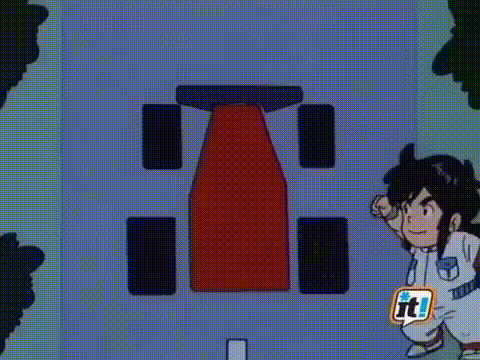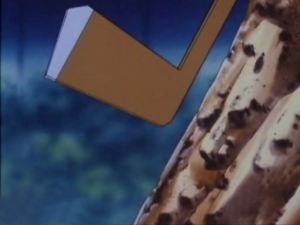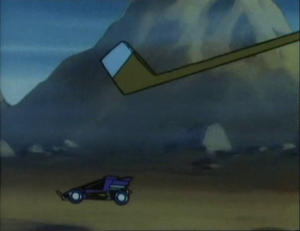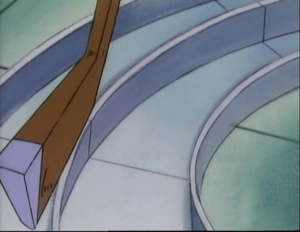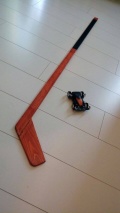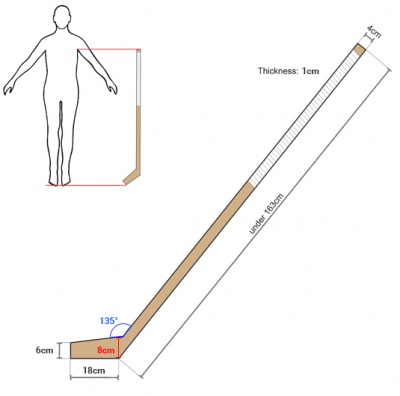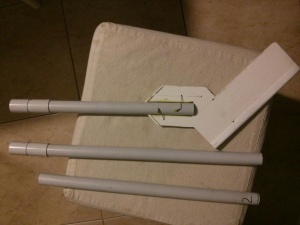Dash!Yonkuro and guide stick
Indice
Dash!Yonkuro
In December 1987 the first adventures of Yonkuro Hinomaru (Alan Scarras in Italy) and his teammates, the Dash Warriors, were published in the Japanese magazine Shogakukan CoroCoro: the manga Dash! Yonkuro was born.
The Yonkuro's story is so successful that a large Japanese public is envolved to the modeling. The main topic in Dash! Yonkuro, like the manga that preceded it, are the model cars: in particular the Tamiya mini 4WD, one of the world leaders of modeling.
Two years later, in 1989, a Dash!Yonkuro anime was produced. It is based on the events developed in the first seven Tankōbons of Dash! Yonkuro. The 25 episodes which composed the anime have been exported to China, Indonesia, Malaysia, South Korea, the Philippines and Italy, gaining success in all these countries. The Dash! Yonkuro anime is now considered a cult among lovers of the sports genre.
Why Dash! Yonkuro was a winning product for Tamiya? The original mini 4WDs introduced in Dash!Yonkuro and the complex plot with some misteries represented something new for the 80s kids. Thanks to Shogakukan Tamiya could also organized competitions in which children could design their own mini 4WD, see it in Dash! Yonkuro and then produced by Tamiya itself. However there is an equally original element presented only in this manga dedicated to mini 4WD: the ability to control their car through a stick (as we know the mini 4WD always go straight): the guide stick!
The guide stick: history and evolution in street races
Thanks to Dash! Yonkuro, in each country where this anime was arrived Tamiya mini 4WD have been very successful: from Japan to Italy the children bought a mini 4WD and tried to drive it like Yonkuro and his friends building guide sticks and emulating their idols of that time. As we know, however, only in Italy (in Messina, Sicily) has developed a group which has organized street races with mini 4WD that then spreaded in all of Italy.
90s and the first two guide stick models
Two models of guide stick were developed in the first years of Street Mini 4WD races in Messina: the first one was a wooden model (built at that time by my father) reproduced as much as possible the guide stick used in Dash! Yonkuro, so he had a very uncomfortable 90 ° angle of the blade. The second model was based instead on a pole made with a bamboo cane, a very light stick with an angle of a blade similar to that used in current races.
After many years and the increasing of the (street) mini 4WD performance, the bamboo cane-based guide stick was abandoned and the wooden model became the standard, acquiring the angulation improvements from the bamboo model.
The experiments of the '00
In the early years of the 21th century, the wood guide stick with a standard 135 ° blade angle had become a standard and those who could not build it (my father had decided to leave the production to me ...) had to buy an hockey stick which has an angle of the blade which can be used in Street Mini 4WD but is much heavier.
In 2005 the Street Mini 4WD racers from Messina start came back to race. The number of racers in the city was such as to allow me to experiment with new variations related to the angle of the blade and the shape of the handle using as a basic model a 2001 standard version made by me and by Riccardo kidouin.
After many test together with the other veterans of the Street Mini 4WD we reach the following conclusions concerning the driving stick:
- It should never exceed 300g in weight to not strain the runner's wrist;
- It must never exceed the height in correspondence with the rider's armpit if kept at its side;
- He must never go lower than the runner's breastbone if held at his side;
- The height of the blade must never go below 5cm;
- The length of the blade should not be less than 165cm (including rod);
- A too long blade creates problems in the corners, a too short one on the straights;
- The angle of the blade should go from 130 ° to 135 ° (inside corner between the blade and the rod). Lower angles give good results on tight corners but not on fast straights and high speed wide curves, instead angles above 135 ° give excellent results on the straights and bad on everything else;
- The handle of the stick, usually bounded by insulating tape, must not have too much grip on the hand. When you are running the height with which you hold the stick changes according to the corner you will meet and how much the runner is approaching the car;
Even the Japanese and Indonesians have started experimenting with alternative forms of driving sticks but the feedback we receive leads us to think that the above guidelines are the best in the Street Mini 4WD racing scene.
The new guide stick developments
In recent years, thanks to the development of the Street Mini 4WD races, during one year there may be more national meetings here in Italy and the transport of the guide stick with train or plane is a big problem. Lately some racers are experimenting with solutions to have a travel guide stick. Many racers have built their own version of the portable guide stick that could be the possible future of driving in Street Mini 4WD races.
As always we hope that Tamiya, lately very interested in the Street Mini 4WD, officially produce a guide stick ready to be used: the hope is the last thing to die!
Ciao from Gianfranco!@shinkurostreet
Read also
Sommario
| Storia |
| Generale |
| Tecnica
Guida · Pneumatici · Pile · Motori · Meccanica · Assetto · Telai · Fisica · Sospensioni · Materiali plastici · Stampa 3D |
| Tutorial |
| Gare |
| Contatti |

